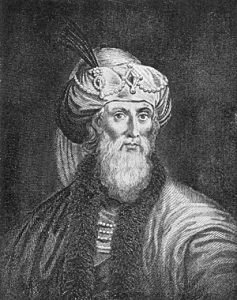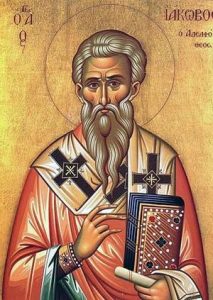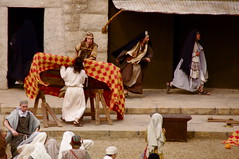
Much ado is made of this phrase about “Jesus who is called Christ” — that second reference in Josephus to Jesus. Many hang a lot of weight on it and even say it is the clinching evidence that proves Josephus knew of and spoke about Jesus in more detail elsewhere. By identifying James here as the brother of Jesus called Christ, it is logical to think that Josephus is referring back to an earlier discussion of his about that Jesus.
That might sound like an obvious explanation. But there are serious difficulties with it. And there are very good reasons for a quite different explanation.
(This post is a summary of more extensive ones I made some time ago. It recently posted this on another forum somewhere, and have decided to keep a record of it here as well.)
Some difficulties with the current phrase, “the brother of Jesus who is called Christ” in Josephus (Book 20 of Antiquities):
- The phrase does not identify which Jesus is the brother of James. Jesus was a common name, (there are 20 so named in Josephus), and few scholars believe Josephus ever wrote that any Jesus was “Christ”.
- It is inconsistent with the way Josephus normally re-introduced characters after their last mention being some time earlier
- It leaves unexplained why this James (supposedly renowned for his law-based life yet charged with breaking the law?) was murdered
- It is inconsistent with the other accounts of James being a Christian (the high priest would not have been so unpopular if James had been a Christian)
- It is inconsistent with the other non-Josephan accounts of the death of James. In other accounts, we read of a large gang of Jews collectively murdering him along with their leaders (with no reference to Ananus as in Josephus).
- It would be one of only 2 places in all of Josephus’s works where he says someone was said to be a Messiah or Christ — not even other clearly would-be messiahs were so described by Josephus
- It creates an unusual word order. Why would a passage about the wickedness of Ananus, with James as a target of his wickedness, be introduced by reference to a relative of that target, especially if Christ was not originally used in the book 18 passage earlier?
So the presumption that this phrase is original to Josephus encounters several difficulties.
Given these difficulties that arise with this phrase, and the history of other uses of this phrase as an identifier of James in early Christian literature, the case for interpolation is far from being ad hoc.
One case (not mine) for it being an interpolation is as follows:
- There was an early Christian legend that the fall of Jerusalem was the consequence of the Jews killing James the Just. This legend is always retold with the phrase that identifies James as “the brother of Jesus who is called Christ”
-
This legend is always said to have been located somewhere in Josephus (or much later in the similar-sounding name of Hegesippus)
Origen’s Commentary on Matthew 10.17
And to so great a reputation among the people for righteousness did this James rise, that Flavius Josephus, who wrote the “Antiquities of the Jews” in twenty books, when wishing to exhibit the cause why the people suffered so great misfortunes that even the temple was razed to the ground, said, that these things happened to them in accordance with the wrath of God in consequence of the things which they had dared to do against James the brother of Jesus who is called Christ. And the wonderful thing is, that, though he did not accept Jesus as Christ, he yet gave testimony that the righteousness of James was so great; and he says that the people thought that they had suffered these things because of James.
Eusebius’ Church History 2.23.20
Josephus, at least, has not hesitated to testify this in his writings, where he says,”These things happened to the Jews to avenge James the Just, who was a brother of Jesus, that is called the Christ. For the Jews slew him, although he was a most just man.”
Jerome: On Illustrious Men Chapter 2
Hegesippus, who lived near the apostolic age, in the fifth book of his Commentaries, writing of James, says “After the apostles, James the brother of the Lord surnamed the Just was made head of the Church at Jerusalem . . .”
-
Despite this legend and its attribution to Josephus, we have no record of this tradition in any of the works of Josephus.
-
We do have in Josephus the identifying phrase that is always associated with this tradition, the construction of which is generally noted for its unusual word order.
-
This tradition attributing the fall of Jerusalem to the murdered James is not consistent with the orthodox Christian view that should have attributed the fall of Jerusalem to the death of Jesus.
-
According to many modern interpretations that this James in Josephus was a Christian leader, the narrative that we do find in Josephus would have us believe that Jews were so favourably disposed towards Christians and a Christian leader that they were all outraged over the persecution of one of them. This flies in the face of all our other evidence about the attitude of these Jews towards Christians.
Is there a single explanation that covers:
(a) the statements that the story of the murder of James who is always identified as “the brother of Jesus called Christ” was found in Josephus; and
(b) the fact that we have no such explanation in our copies of Josephus; and
(c) the unusual position of the story’s accompanying phrase “the brother of Jesus called Christ” in Josephus?
Yes, there is such an explanation.
Note that Jerome attributes the story to Hegesippus and not to Josephus, as had Eusebius and Origen before him.
(A fuller discussion on the possible confusion of Hegesippus and Josephus can be found here.)
Given the similar-sounding names of Hegesippus and Josephus, it is not impossible that Origen confused the two names in his memory when attributing the explanation that Jerusalem was destroyed because of Jame’s murder to Josephus. Eusebius repeated Origen’s mistake.
An unorthodox Christian scribe at some point attempted to make up for the absence in Josephus of the story of James’ murder by inserting it into Josephus. Perhaps he believed, following Origen and Eusebius, that it should have been there, so put it there. Or maybe it was inserted for some other reason, even earlier, and Origen and Eusebius really did read it in their copies of Josephus. This scribe also, of course, included the identifying phrase “brother of Jesus called Christ” that had always accompanied the story.
Later, an orthodox Christian copyist who believed that Jerusalem would have fallen for its murder of Jesus, not James, removed the passage. He retained, however, the nice touch of the identifying phrase for James, “the brother of Jesus called Christ”.
This explanation has the advantage of being able to explain the following:
- how it is that there was an early Christian tradition about the story of James’ murder being found in Josephus, while none of our copies has such a story
- the unusual construction and position in Josephus of the phrase “brother of Jesus who is called Christ”
This explanation also has the advantage of consistency with the literary culture of interpolations of that era. I have discussed this in previous posts and more fully in A literary culture of interpolations and Forgery in the Ancient World and Was forgery treated seriously by the ancients.

The explanation has the further advantage of explaining why the phrase appears to be used as an identifier of James, when it in fact fails completely to do so. Josephus, after all, referred to several people by the name of Jesus, but not once to any by the label of Christ. At least this, I believe, has been the majority view, even at times the consensus, among scholars over the past hundred years and more.
It also explains why the phrase is positioned, unusually, before its subject, James.
It also has the advantage of explaining its curious echo in the most popular of all Christian gospels, that of Matthew — in Matt. 1:16, 27:17, 27:22. Also in John 4:25 and Justin Martyr First Apology 30.

